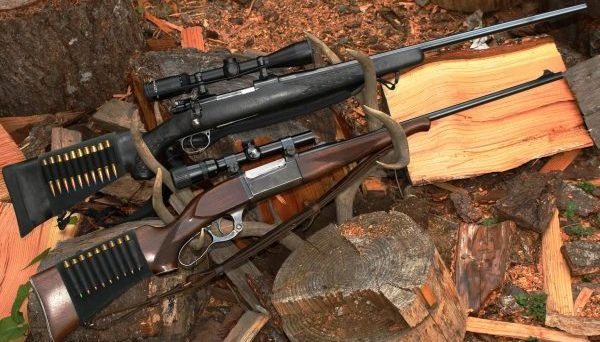
Writing in the Huffington Post Monday, self-confessed “radically-moderate” New Yorker Mark Ellis perhaps unintentionally highlights the problem with gun control, or at least its advocates.
One viewpoint of this New Yorker, whose life appears to have been spent in the Big Apple and thereabouts, along with a stint at college in Philadelphia, is that firearms have some practical purposes. He lists those as:
…protection (from a criminal, groups of criminals, from the possibility of a future corrupt totalitarian government, or the potentiality of foreign invaders), the feeling of safety and control (which is important for psychological and emotional health), hunting, other sport(s) and activities, and gun collection (or to impress others).”
“Each of these are sufficient practical reasons to permit gun ownership,” he observed.
Mark that as a big “oops” where Second Amendment activists, and especially gun owners in the West and South are concerned. Nobody “permits” gun ownership in this country. It is a constitutionally-delineated, fundamental civil right. If one must have permission from the government, one is not exercising a civil right, but a government-granted privilege.
Later in his commentary, Ellis does it again:
Additionally, I believe in a waiting period prior to purchase (for cooling off and to research the purchaser) and believe that assault rifles, sniper rifles, and semi-automatic weapons, which are not necessary for hunting or ordinary protection, should not be commercially available.”
Cooling off? For what?
“Sniper rifles?” What, exactly, are those? Define a “sniper rifle.” If it were up to people at, say, the Seattle-based Alliance for Gun Responsibility, they might say it’s a scary-looking rifle with a black synthetic stock, telescopic sight and capable of firing a bullet that can hit a target at several hundred yards. However, to the average hunter – who understands “gun responsibility” more than those Seattleites ever will – that’s a perfect rifle for hunting elk, moose, sheep, deer or caribou in a damp environment. How does one tell the difference between a hunting rifle and a sniper rifle?
“Assault rifles…and semi-automatic weapons, which are not necessary for hunting or ordinary protection?” According to the gun prohibition lobby, which is largely financed by Ellis’ fellow New Yorker Michael Bloomberg, there is such a thing as a “semi-automatic assault rifle.” The argument is a non-starter for gun rights activists. Millions of American citizens own semi-auto modern sport/utility rifles for “ordinary protection.” They may live in a rural setting where four-legged predators (not to mention two-legged miscreants) show up unexpectedly. Even in urban settings, many people believe that a .223-caliber semi-auto rifle is a better home defense tool than, say, a .44 Magnum revolver.
To his credit, Ellis points to the obvious fact that the gun prohibition crowd deliberately ignores:
“Criminals have access to guns on the black market; law abiding citizens do not buy guns illegally. So, to deny good guys (like ME) access to a gun is over-correcting and under-performing. Locations with the highest gun crime volumes tend to be cities that prevent gun ownership altogether (or make the barriers to ownership dispositive) like Chicago, New York, and Washington, D.C.; and similarly, cities that have the highest gun crime rates (per capita) also frequently have stringent gun control, like Detroit.”
Ellis’ essay, which pitted pro-rights arguments against anti-rights assertions makes an interesting and educational read. But it is written from the perspective of someone hailing from the wrong side of the river (the Mississippi, or perhaps the Hudson). So, while he seems to “get it,” he really hasn’t got it. But at least he’s trying.
On the other hand, gun prohibitionists don’t try at all. They are convinced of their righteousness, and the fact that they don’t know a thing about firearms other than that they are scared of them and want to be rid of them incrementally if not all at once doesn’t bother them. And that’s the problem.